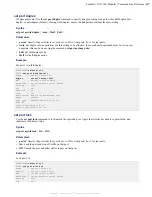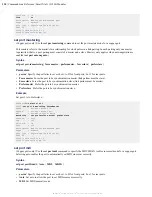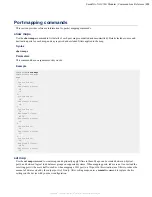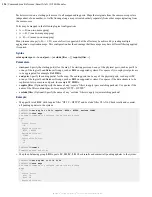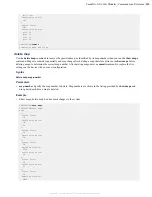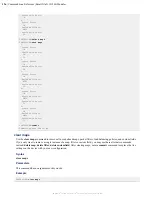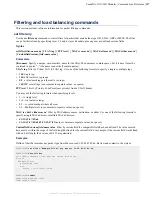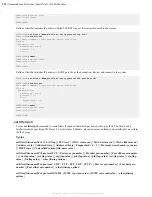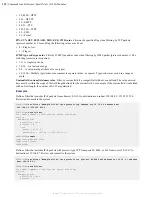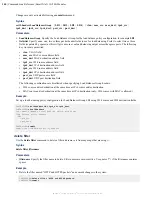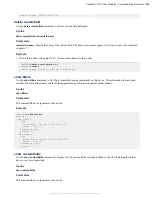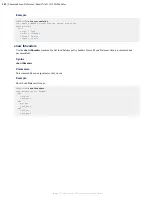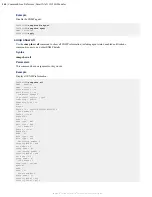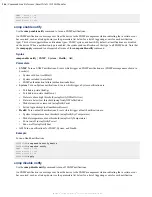
SmartNA-X 1G/10G Modular | Command Line Reference |
131
SmartNA-X
™
1G/10G User Guide 1.4
©
2015 Network Critical Solutions Limited
Parameters
filter-name
Specify a unique, case-sensitive, name for the filter. The name may contain spaces, but if it does it must be
contained in quotes "..." (the name cannot itself contain quotes).
VLAN
tag
Filter by Virtual LAN (VLAN) tag. Use one of the following formats to specify a single or multiple tags:
•
100
single tag
•
100–110
inclusive tag range
•
0/1
a value/mask tag pair (here all even tags)
•
100,150
several tags (use commas to separate values, no spaces)
PCP
level
Filter by Priority Code Point (user priority) from a VLAN header.
You may use the following formats when specifying levels:
• 2—A single level
• 2-4—An inclusive range
• 0/1—A value/mask pair (here all even)
• 0,2—Multiple levels (use commas to separate values, no spaces)
MAC
src
,
dest
,
either
mac-id
Filter by MAC address source, destination, or either. Use one of the following formats to
specify a single MAC address or multiple MAC addresses:
•
01:23:45:67:89:ab
•
01:23:45:67:89:ab,01:23:45:67:89:ac
(use commas to separate values, no spaces)
Address
src
,
dest
,
either
ipv4-address
Filter by IPv4 address. You may give either a single specification, to find packets
where either the source or the destination address matches, or separate specifications for source and/or destination address.
The following address formats are recognised:
• 192.168.0.1—A single address
• 192.168.0.4-10—An inclusive range
• 192.168.0.*—Wildcard (192.168.0.0-255)
• 10.10.0.0/255.255.255.252—Mask (10.10.0.0-3)
• 10.10.0.3,10.10.0.5—Multiple addresses (use commas to separate values, no spaces). Ranges and wildcards may be
used in any segment(s). Multiple addresses may each use either ranges and wildcards or a mask.
For ARP packets, use source for the sender address and destination for the target address.
Protocol
protocol-number or name
Filter by IP protocol number. You may also use the following names in place of the
number: TCP (6), UDP (17), ICMPv4 (1), SCTP (132), and TCP_UDP (6 and 17). The following number formats are
recognised:
• 1—A single protocol
• 1-2—An inclusive range
• 0/1—A value/mask pair (here: all even protocols)
• 6,17—Multiple protocols (use commas to separate values, no spaces). Multiple protocols may each use a range or
mask.
DSCP
code
Filter by DSCP code. The following code formats are recognized:
• 10—a single code point
• 10–14—An inclusive range
• 0/1—a value/mask pair
• 10,12,14—multiple code points (use commas to separate values, no spaces). Code points may each use a range or
mask.
Port
src
,
dest
,
either
port-number
Filter by TCP/UDP port number when protocol number 6 (TCP), 17 (UDP) or SCTP
(132) is specified in Layer 3.
You may enter either a single specification to find packets where either the source or the destination port matches, or
separate specifications for source and/or destination port. Common TCP ports include:

